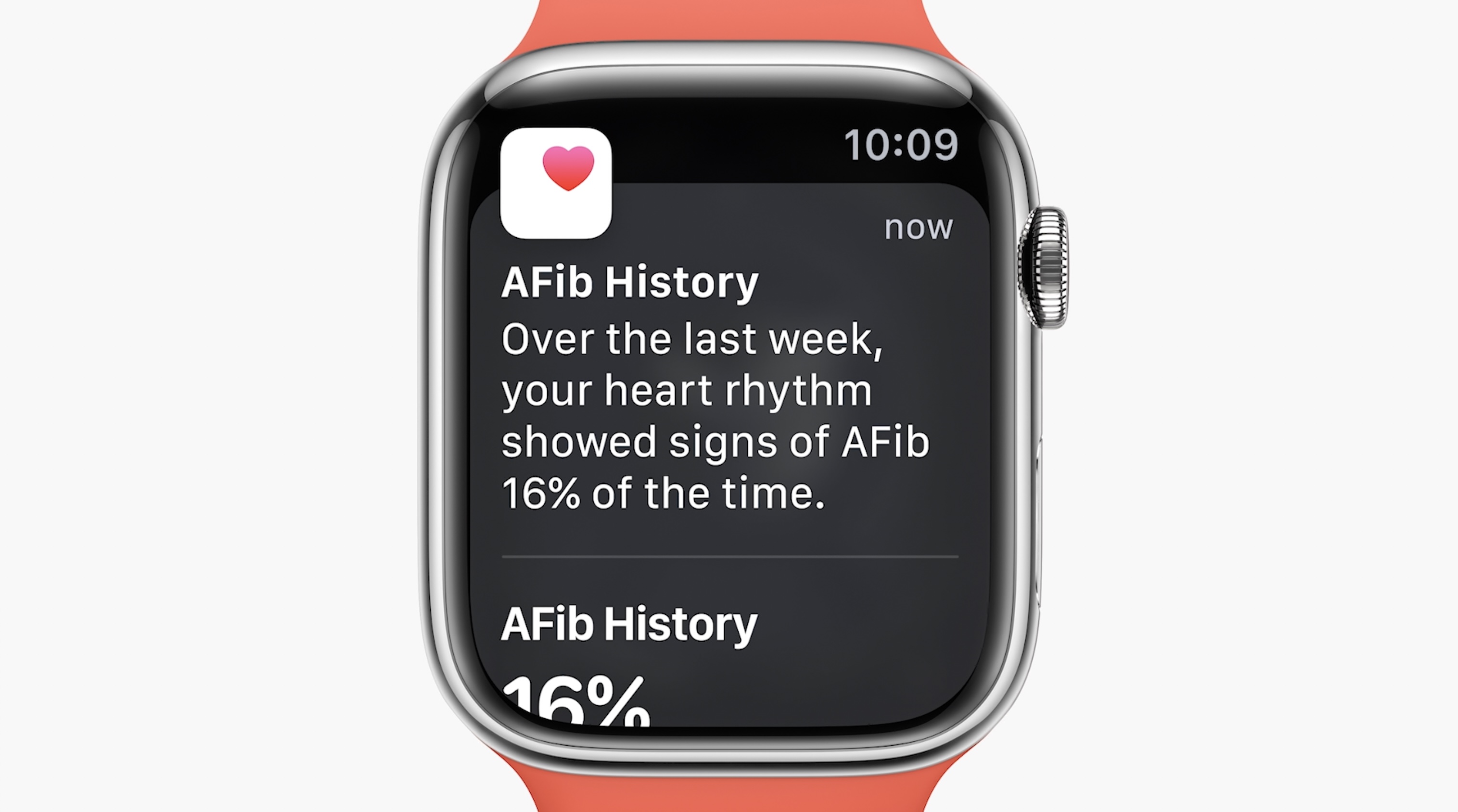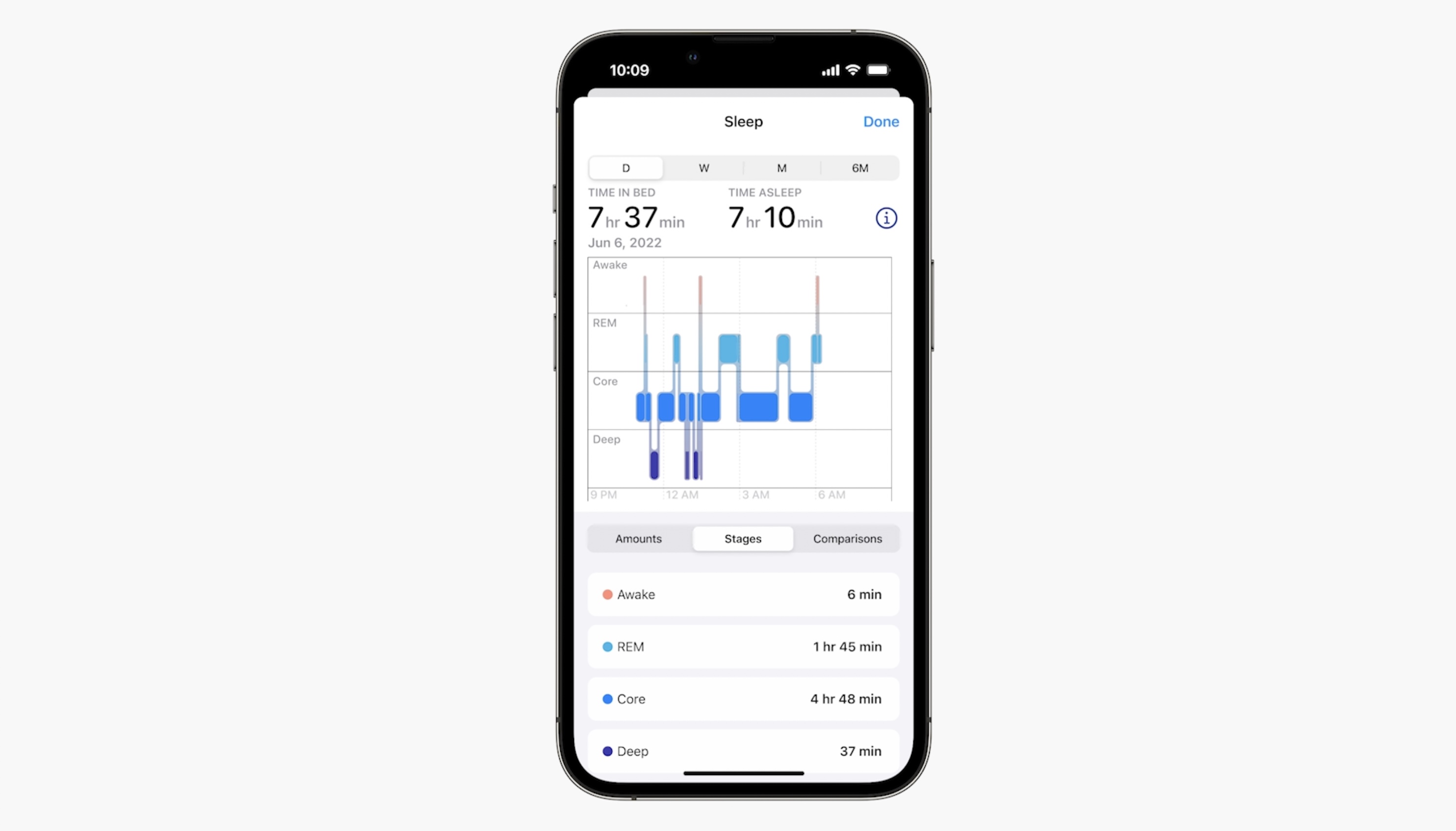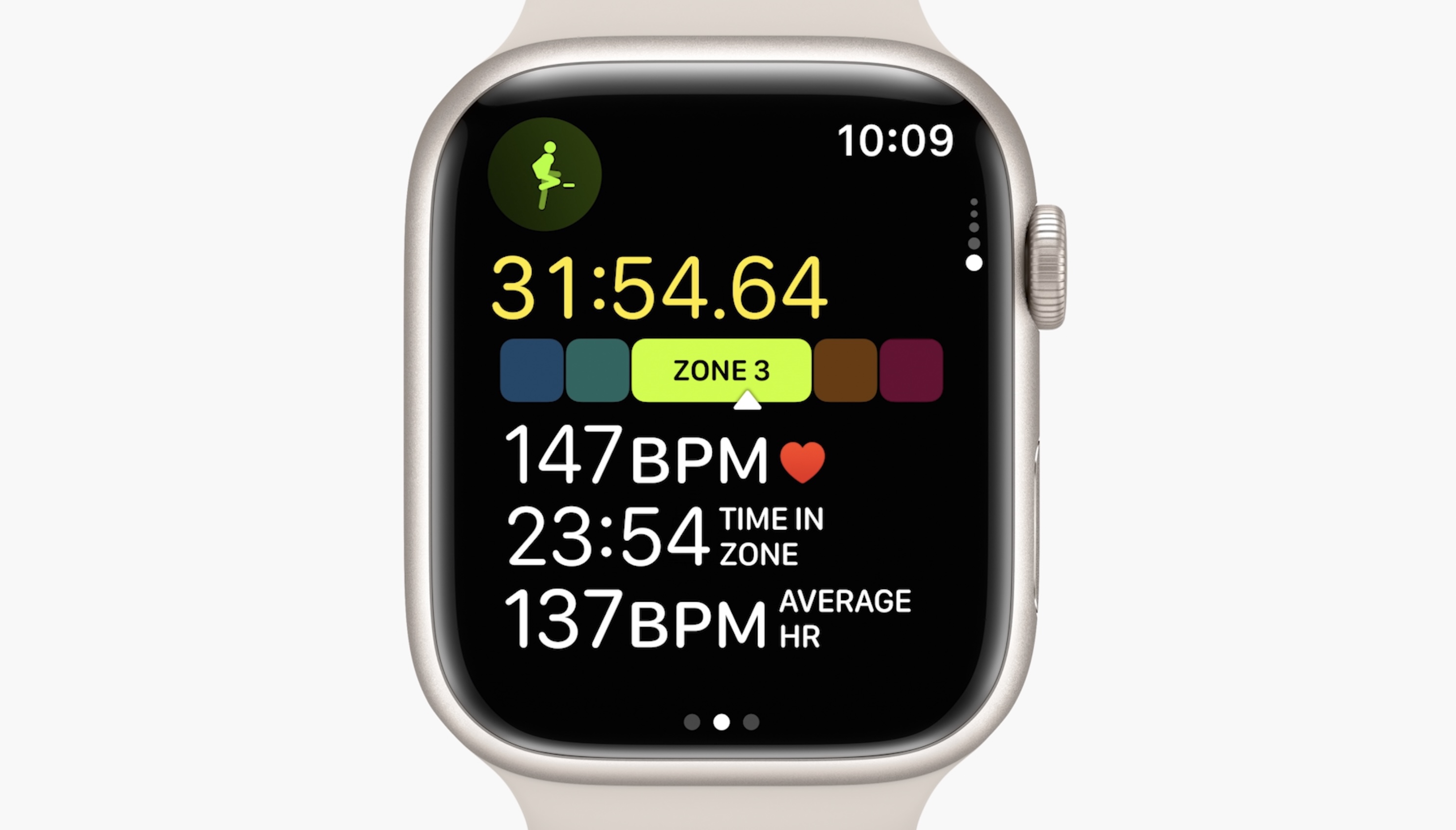Products You May Like
Apple’s health business could now stand alone as one of the largest in the sector in terms of sheer reach — if it could ever be disentangled from the company’s other products, which, by design, it really can’t. At the company’s annual WWDC global developer conference last week, a variety of new health-related features were introduced that cover not only the wellness-oriented Apple Watch lineup, but also the company’s iPhone, iPad and beyond.
From product design, to participation in academic research, and to hiring, Apple has demonstrated a concerted effort to do more in health, and I spoke to Chief Operating Officer Jeff Williams, Vice President of Health Dr. Sumbul Desai and Vice President of Fitness Technologies Jay Blahnik following its WWDC announcements to learn more about just how important health and wellness are to the consumer technology giant’s ambitions.
Williams started off by reiterating something I’ve heard from Apple in the past on the subject: As a company, it never really set out with a strong intent to get into the health business in the beginning — at least not in the way it set out to develop a product like the iPod or the iPhone.
“It started when we were working on the watch,” he said. “And because the watch was such a personal device, and you’re wearing it, we thought that there is a huge opportunity to maybe give people information about their health, and the more we started pulling on threads, we decided that not only is there an opportunity — there’s a responsibility to do more in the health space.”
Williams said that the impact of that felt responsibility is what has resulted in the many health features Apple has introduced in the years since the Watch’s introduction, both on the Watch and across its platforms. Ultimately, Williams said, Apple has two “fundamental tenets” that undergird its approach to introducing new health-related products and services: that they be “deeply grounded in science,” and that “privacy is at the core of everything” Apple does.
Informed patients, augmented physicians
Those principles are at the heart of the new features Apple unveiled at the conference, according to Desai, who pointed to the scientific rigor behind their introduction of sleep stage tracking for the Apple Watch, and the fresh FDA clearance of their AFib history feature, which will roll out to Apple Watch users in the U.S. with the watchOS 9 update sometime this fall.
“As Jeff alluded to, everything we do in health is based on the science, and AFib history was validated in a clinical study, with participants wearing both Apple Watch and an FDA-cleared reference device,” Desai told me. “In that study, the average difference in weekly measurements between the two devices is actually less than 1%.”
That’s a remarkably thin margin for a piece of non-specialized consumer tech, which comes with the added benefit of being worn by owners consistently for the bulk of the day over a period that can span years — a claim no dedicated medical heart-rate monitor can match.
The significance of offering AFib history as something Apple Watch owners can share with their physicians, combined with all the other health data that they can export via PDF should they choose to share a more complete picture, might not be immediately apparent, but it represents a depth and breadth of individual patient data that healthcare professionals have never had access to before. I asked about how this kind of groundbreaking work will impact healthcare as a whole, and whether Apple is working with medical professionals on understanding those impacts.
Desai (a physician herself) pointed out that Apple spends “a lot of time talking to physicians,” both on studies like the one it’s conducting with Toronto’s University Health Network (UHN) which we covered last year, and in other capacities as well.
“We don’t want to throw technology over the wall,” Desai explained. “We want to actually bring the physicians along so that they understand where how this can be used, because to your point, it’s going to change their practice, and it’s also going to change their interactions with their patients.”
“It’s clear to us that the future of healthcare still has the patient-physician relationship at the center of it,” Williams said. “We just want to enhance that. We don’t view that technology somehow replaces [that], we just view that it enhances that relationship and in the future, you’ll have a much more empowered patient, and a physician who is able to operate at the top of their license because they just have a better set of information with which to work.”
Williams acknowledged that features as detailed as AFib history “will take some time” to be “understood, used and adopted,” but he cited one powerful way it could have an immediate impact: Detecting a case in which a patient receives an ablation treatment to resolve chronic AFib, but in which that treatment doesn’t take the first time and the AFib (which would be otherwise asymptomatic) remains.
Apple is also introducing medication reminder features to Health, including the ability to scan labels to add your own medicines, and get reminders to hopefully improve adherence to their intended use. It’ll also provide users with info about potential negative interactions, and offer yet another way in which patients can have more informed conversations with their doctors with actual data to back them up.
Super sleep science
Apple’s approach to sleep tracking is likewise backed by science, and promises to contribute still more back to the research community through a new Apple sleep study that the company is adding to its ongoing heart study as an opt-in option for Apple Watch owners to join when the new update launches. Williams prefaced the feature by acknowledging that Apple is hardly the first to do sleep stage tracking (dedicated health-tracking companies including Oura and Whoop have been offering that for years, for instance), but again references a need to feel confident in the science behind the feature before bringing it to the public.
“The machine learning models that were trained, were validated against the clinical gold standard of polysomnography [a type of multi-parameter sleep study],” Desai added. “And this was actually one of the largest and most diverse populations ever studied for a wearable.”
“Prior to sleep stages, we were really focused on helping people meet their sleep duration goals, since that’s really important — that consistency — but we wanted to go a little further and dig into the science, and provide users with more information around their sleep cycles,” Desai explained. “So using the signals from Apple Watch’s accelerometer and heart rate sensor, users will now be able to see their sleep stages while they’re in REM, core and deep sleep.”
Apple’s use of ‘core’ to define the type of sleep users spend the bulk of their nights engaged in, which is more commonly referred to by other sleep stage trackers as ‘light,’ is an interesting break from the field: The company found that ‘light’ wasn’t really the best descriptor, since it tended to strike the average user as something meriting concern, when in fact it’s a perfectly normal part of the overall sleep cycle.
It’s a good example of how Apple continually strives to balance a desire to add increasing power and sophistication to its health features, while maintaining their approachability and accessibility to a very broad audience. That’s also a key ingredient in their approach to the changes coming in their new Fitness features unveiled at WWDC.
Keeping fitness fun while serving fanatics
Blahnik has been with Apple since before the Apple Watch was introduced, and he’s overseen the company build its fitness features from fairly fundamental activity tracking, to a sophisticated suite of metric management and a variety of professional, guided workouts. At WWDC, Apple made a number of big announcements around Fitness, including bringing simple activity tracking directly to the iPhone for users who don’t have a Watch, as well as a bunch of new metrics, features and sport types for enthusiast and advanced athletes, and improvements to the Fitness+ subscription workout service.
“Over the years, we’ve continued to push further and further, because we know different things motivate different people,” Blahnik said. “And we want to make sure that we’re constantly providing variety for different personalities, and for the things that motivate people.”
The updates include three new metrics for runners that can help avoid injuries, including stride length, ground contact time and vertical oscillation. Blahnik pointed out that these are typically captured using a range of specialized equipment or direct observation by a professional, and that they’re “really difficult to do from the wrist.” Still, he says Apple was able to build algorithms that track them reliably, and then display them either directly during a workout session, or afterwards in the workout summary.
Considering Apple spent a lot of time talking about these, and other advanced features like custom workouts and automatic tri-sport workout detection for triathletes, I asked Blahnik how Apple determines when and where to address more advanced needs, vs. more general population features.
“Prior to Apple Watch, most most people wouldn’t know, unless they brought their phone, even how far they had run, and […] the more that this kind of information becomes available, you do find users want more,” he said. “Or they maybe get on a journey where they’re going to do their first 5k, and they start reading more about their health. And so while [the new metrics] do seem advanced, I’m always amazed at the fact that some of what we measured in the beginning seemed advanced as well.”
Blahnik says that in the early Apple Watch days, even having access to the basic three rings that Apple still uses to categorize and present its health data in summary — Stand, Move and Exercise — was itself “advanced” compared to what was generally available. Still, even if users are seeking more granular feedback, he notes that the challenge is in introducing sophistication while still welcoming in those who might find the full scope of what Apple Health has become overwhelming.
“I think for us, it’s just a journey where we’re constantly wanting to offer more, trying to build the features in a way that are usable and inspiring to both beginners and advanced athletes, and then never burdening the person that just wants to come in and start the experiment,” he said, pointing out that the Workout app still looks and feels the same when first opened, and reveals its complexity as you choose to dive in.
Health is quotidian
Apple’s health efforts have evolved from a subset of one among many of a single ancillary device’s features, into something that spans the company’s entire product ecosystem, and that both informs and welcomes collaboration from healthcare practitioners and researchers globally. I asked Williams for a sense of how that shift has led Apple to think differently about its overall approach to product development.
“I think everyone has an appreciation for the fact that these devices are with you all the time,” he said. “We have this huge opportunity to help people with their health and so, broadly — with everything from Screen Time, which is ultimately a health thing, since there’s a huge mental health crisis, and we think something like Screen Time helps contribute to people’s wellbeing — all the way across the company, people think about ways in which our products and services can help people from a health standpoint.”



